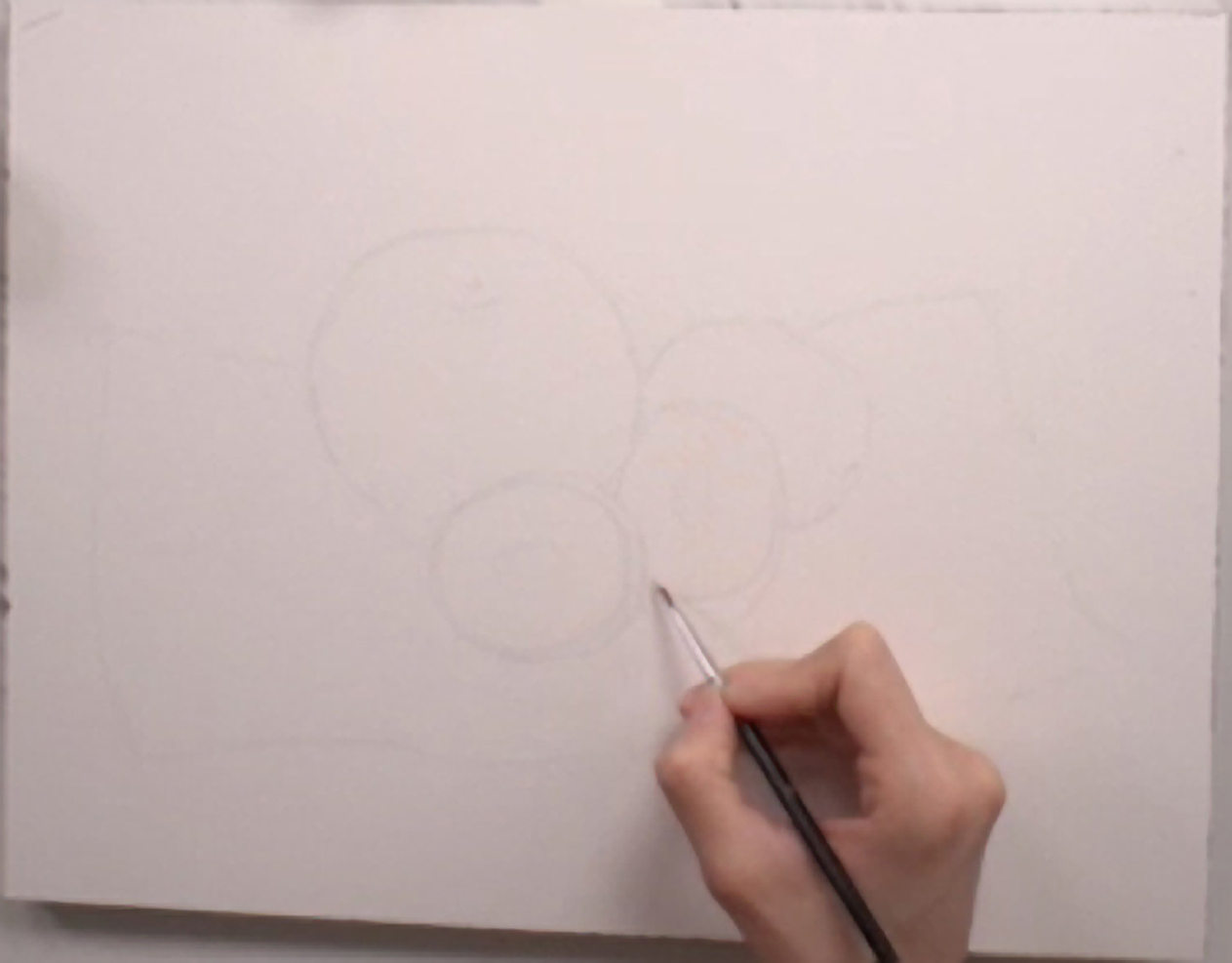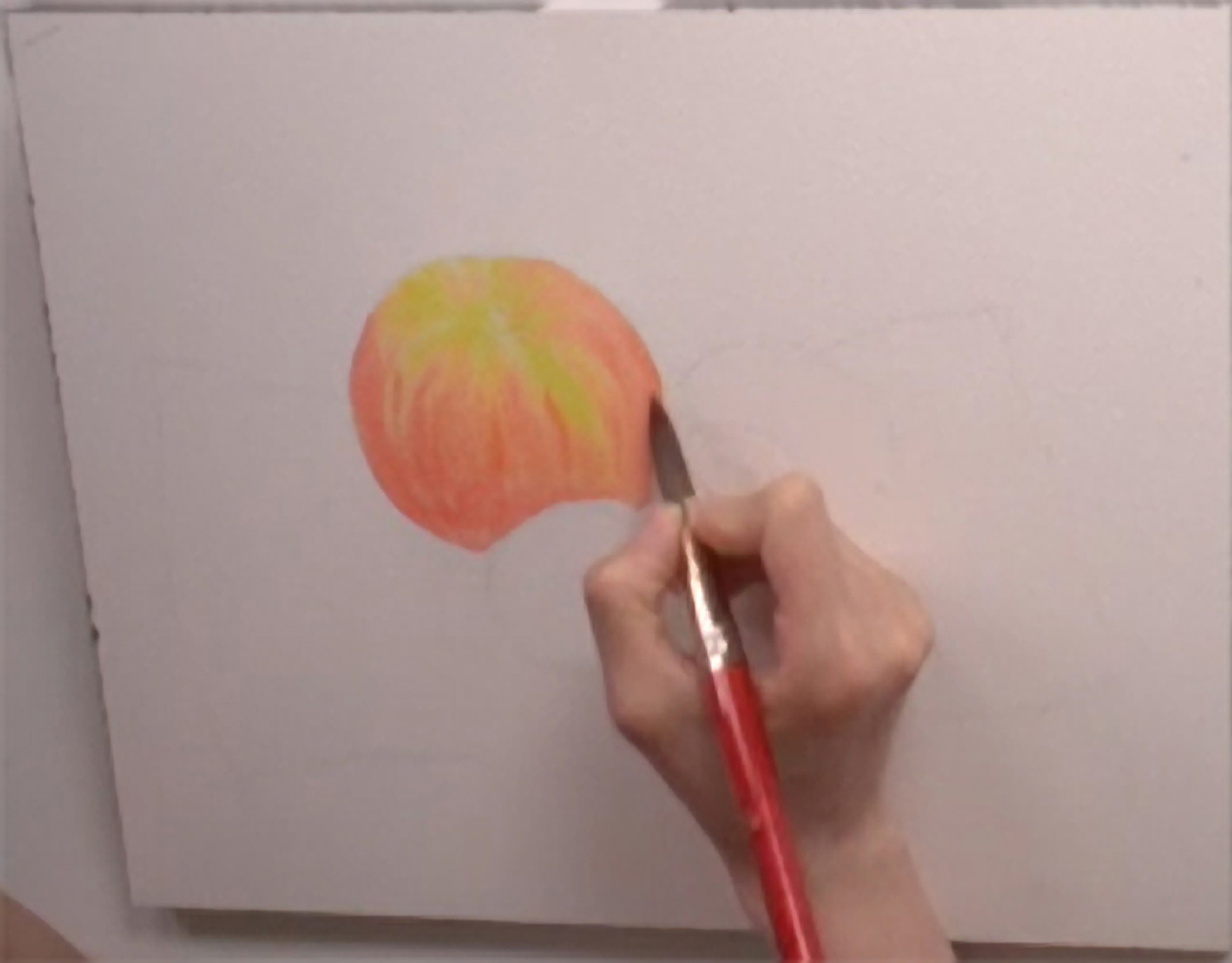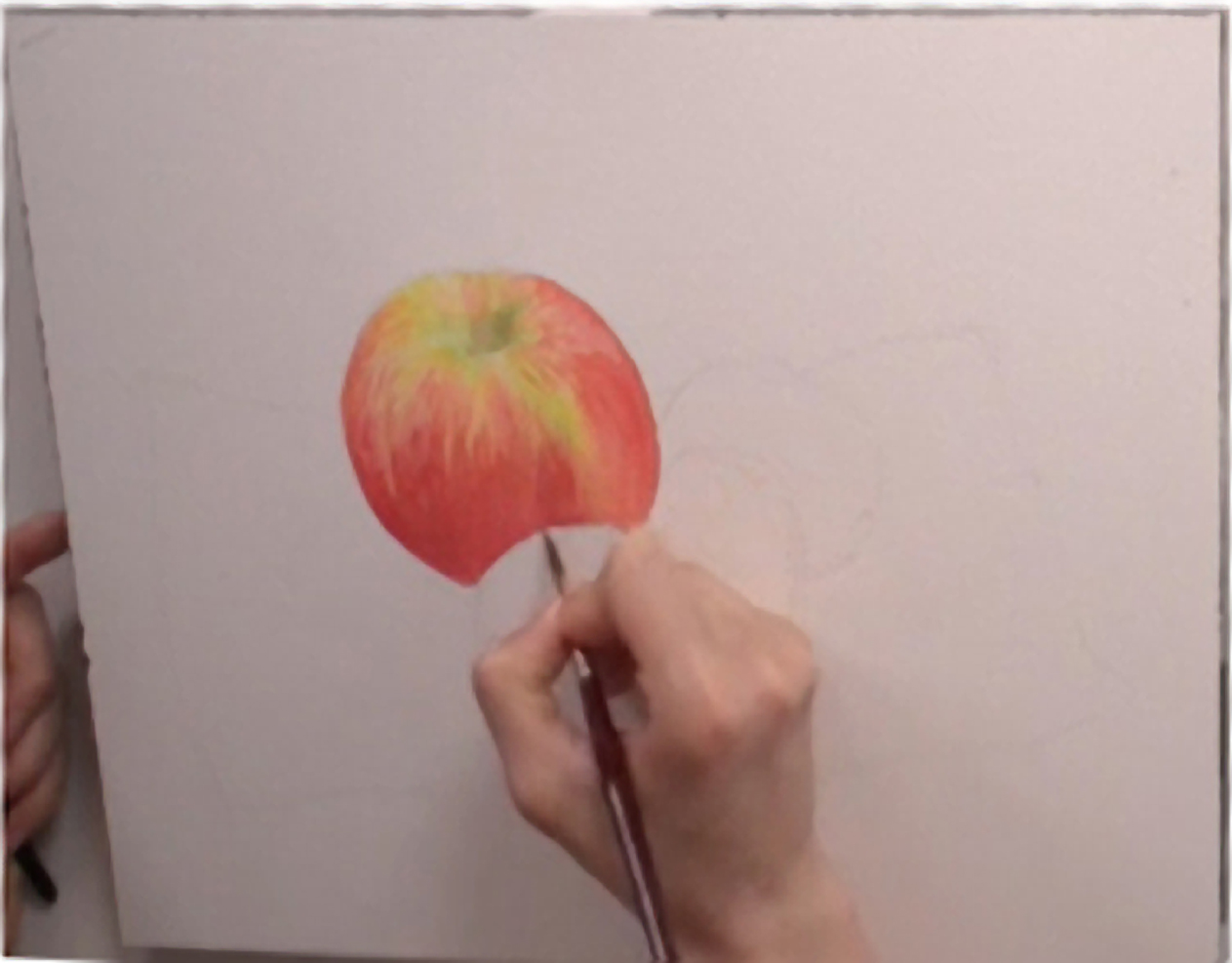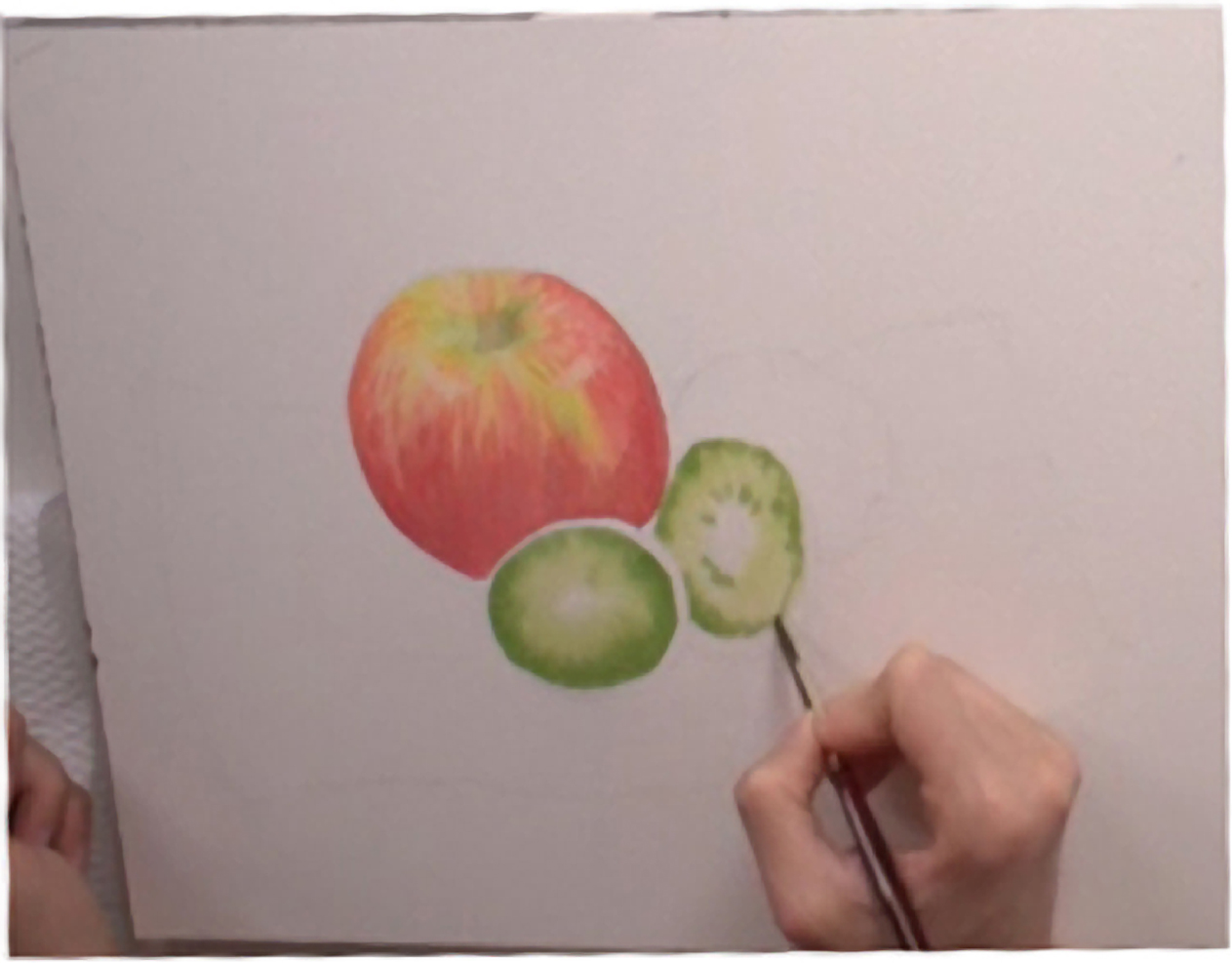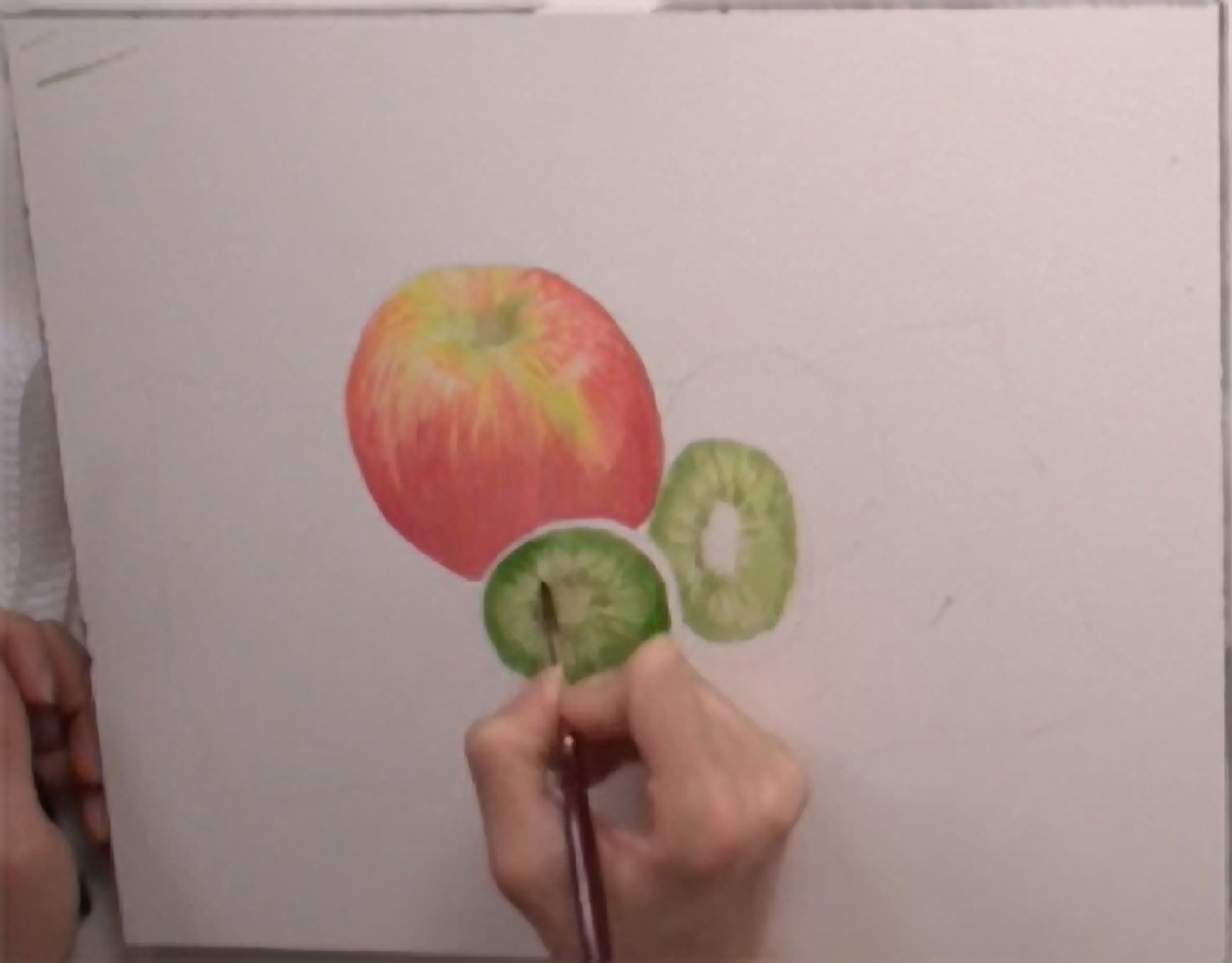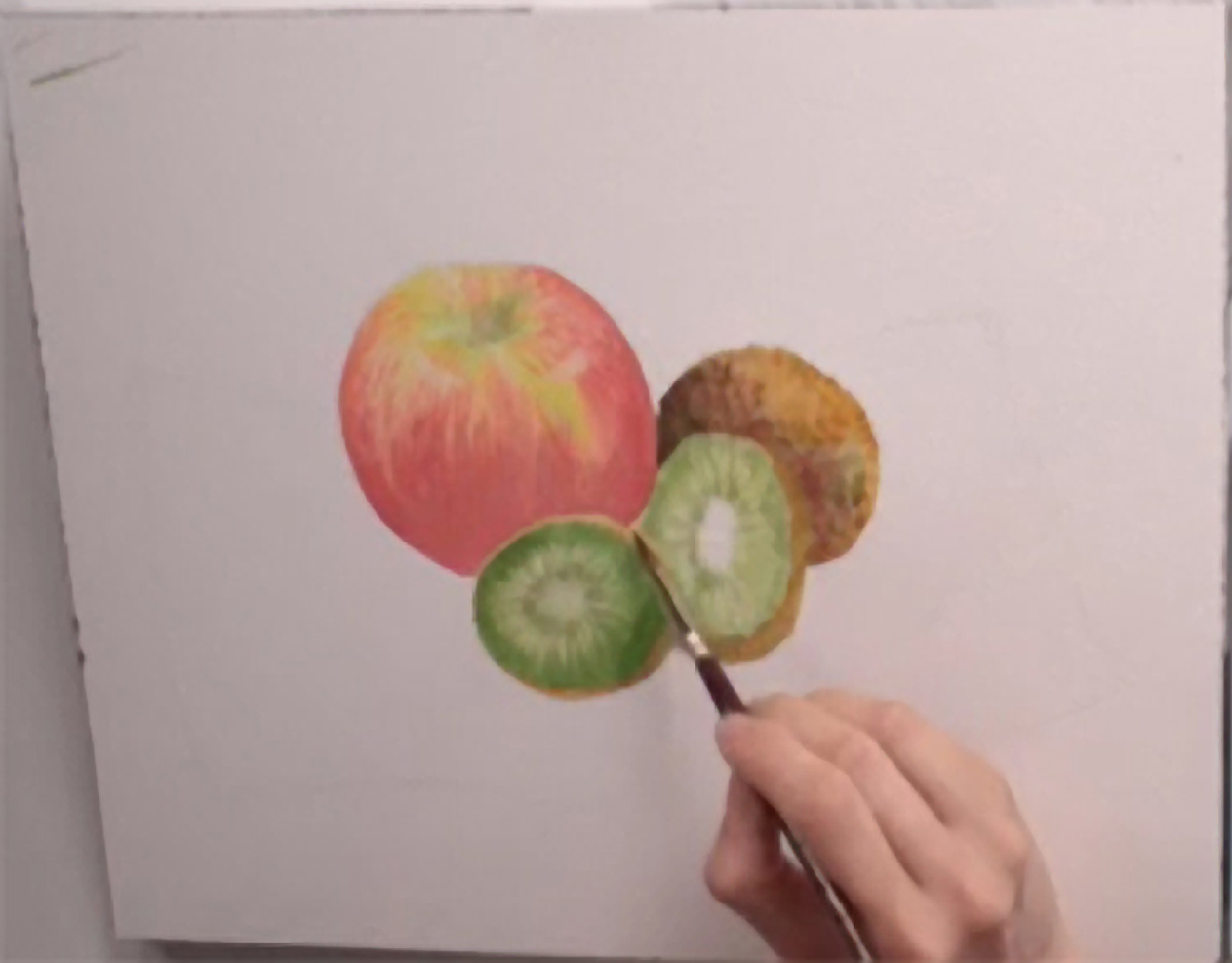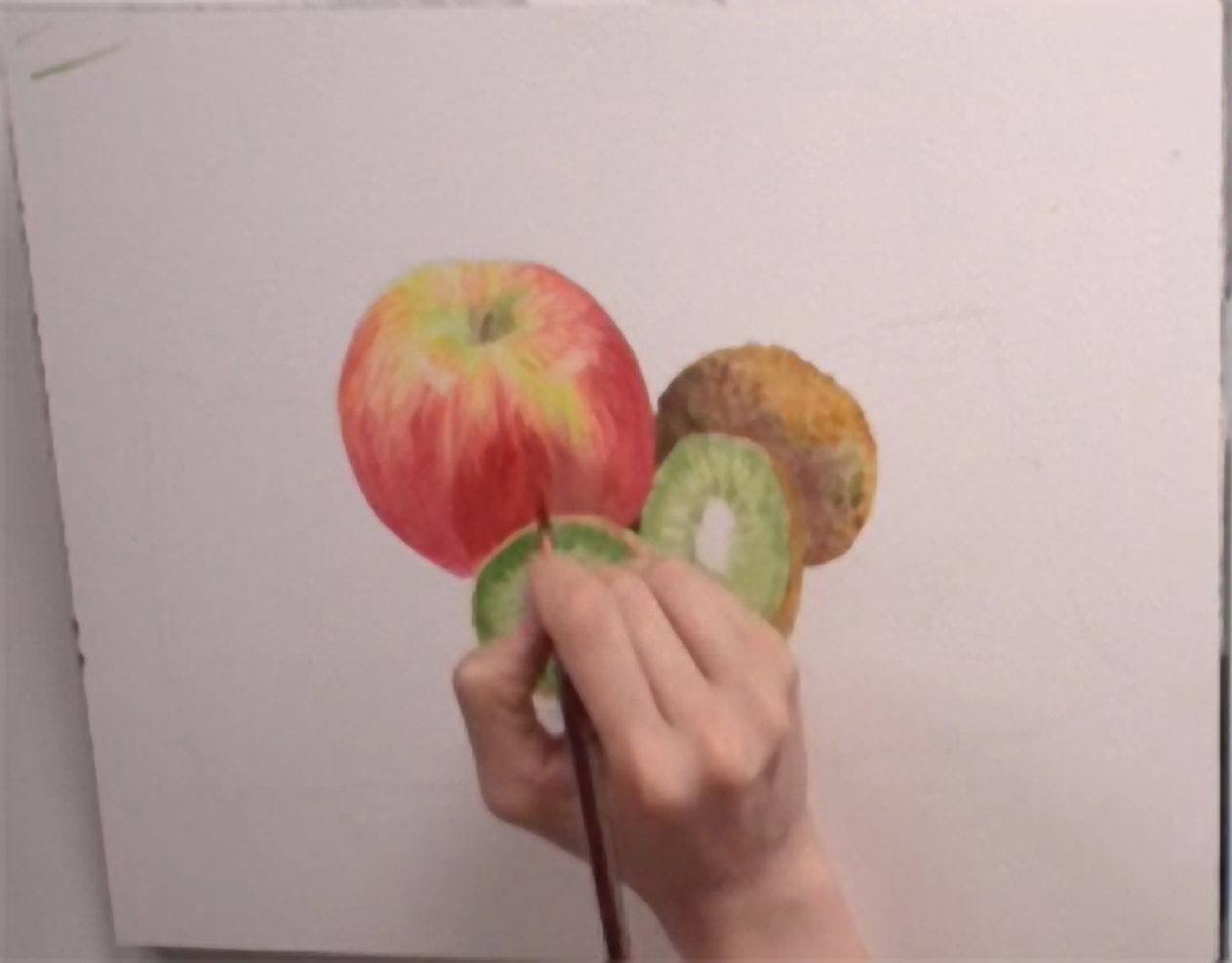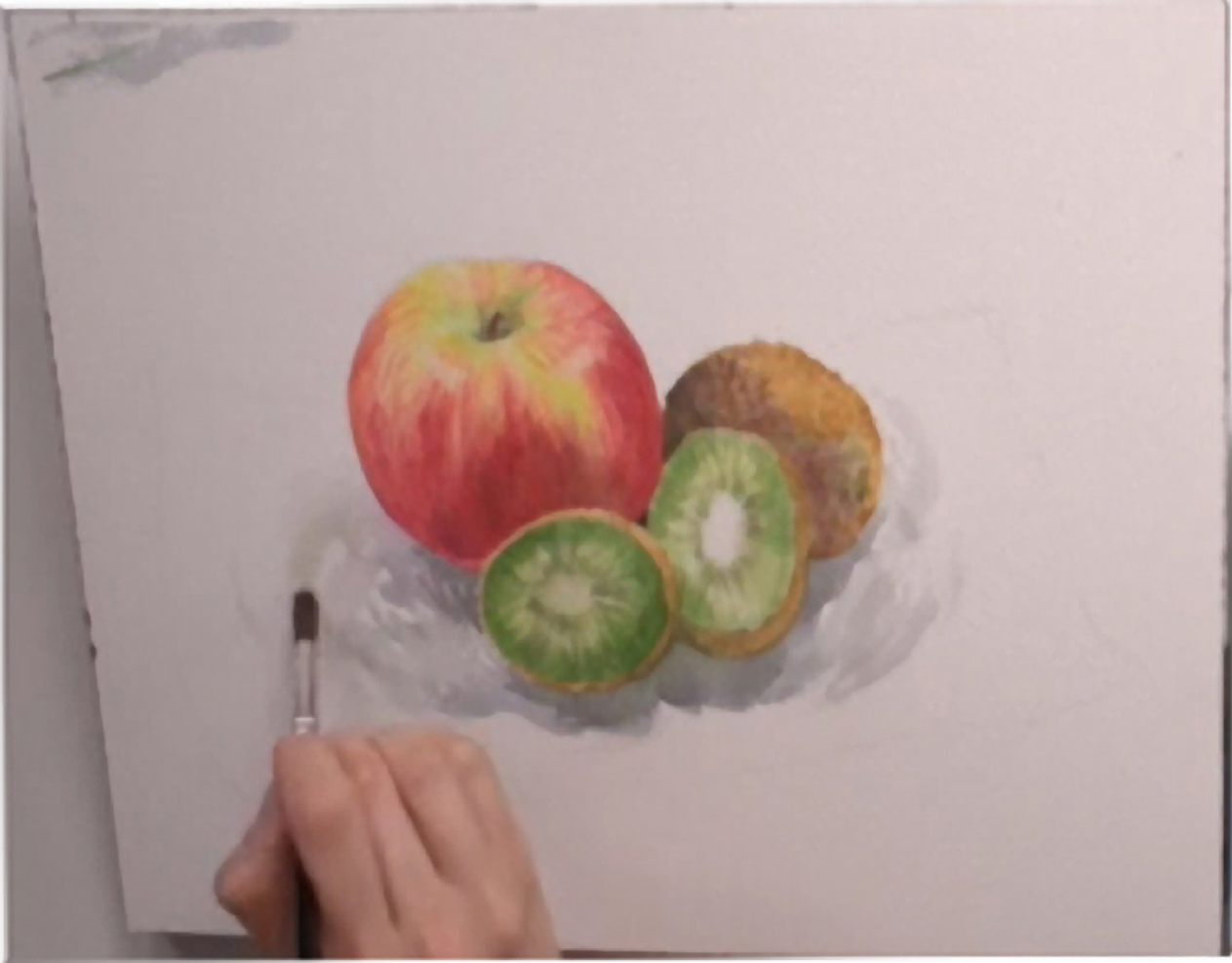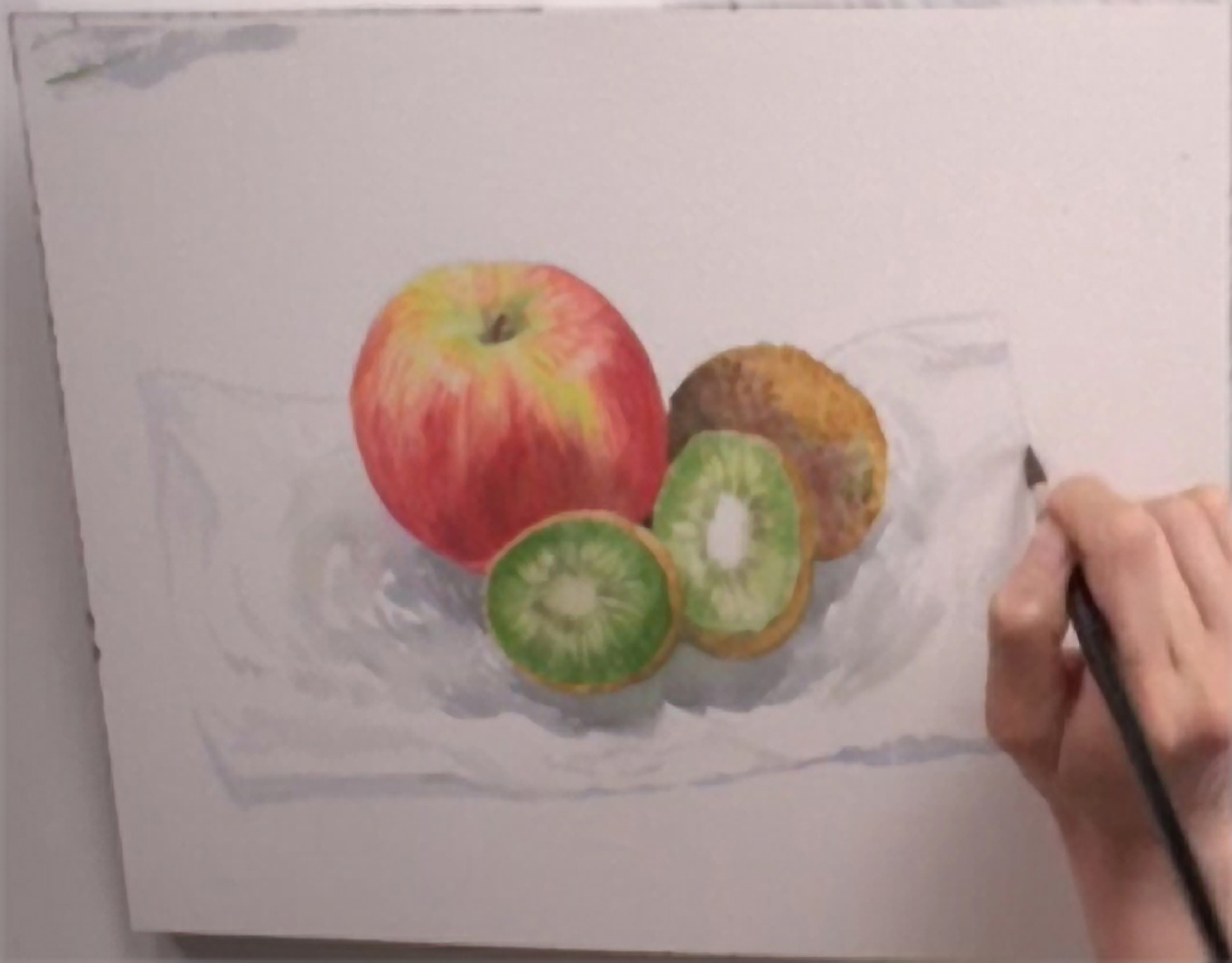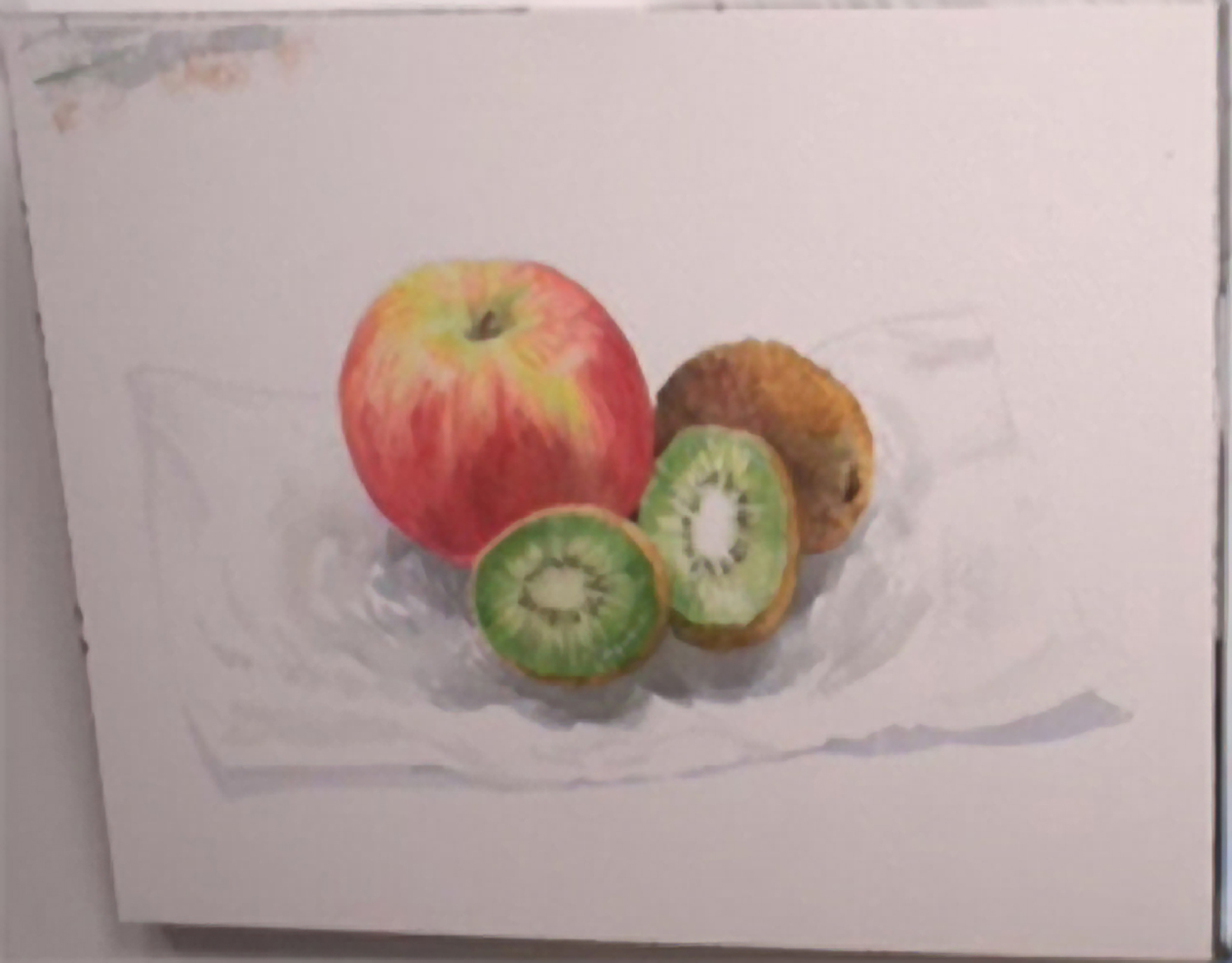Follow along as Isabella Kung sketches and paints realistic fruit. We cover composition, different surfaces, masking fluid, shapes, and much more in this simple yet useful exercise. Click here if you prefer watching a step-by-step video on our Beeblys WatercolorPainting.com.
Materials used:
- Reference picture of some fruits, or just place some real fruits on a sheet of paper
- H or HB pencil
- A block of Arches cold press watercolor paper (140lb, size 10" x 14")
- Paint palette for watercolor paints
- Kneaded eraser
- Grumbacher Masking Fluid
- Rubber cement pickup (a.k.a. natural rubber pickup)
- Paper towel
- Towel
- Tabletop easel or book to prop painting on
Paints (Winsor & Newton's Professional Watercolors)
- Lemon Yellow
- Cadmium Orange
- Alizarin Crimson
- Cadmium Red
- Permanent Sap Green
- Hooker's Green
- Viridian
- Cobalt Blue
- Yellow Ochre
- Burnt Umber
- Perylene Violet
- Ivory Black
Brushes
- Princeton: Synthetic round brush (size 6)
- Escoda: Reserva Kolinsky Tajmyr 1212 brush (size 6, round)
- Escoda: Angular brush (size 10)
- Recap: Kolinsky sable brush (size 7)
- Raphael: Synthetic round brush (size 2)
Step 1: Preparing For A Still-Life Sketch
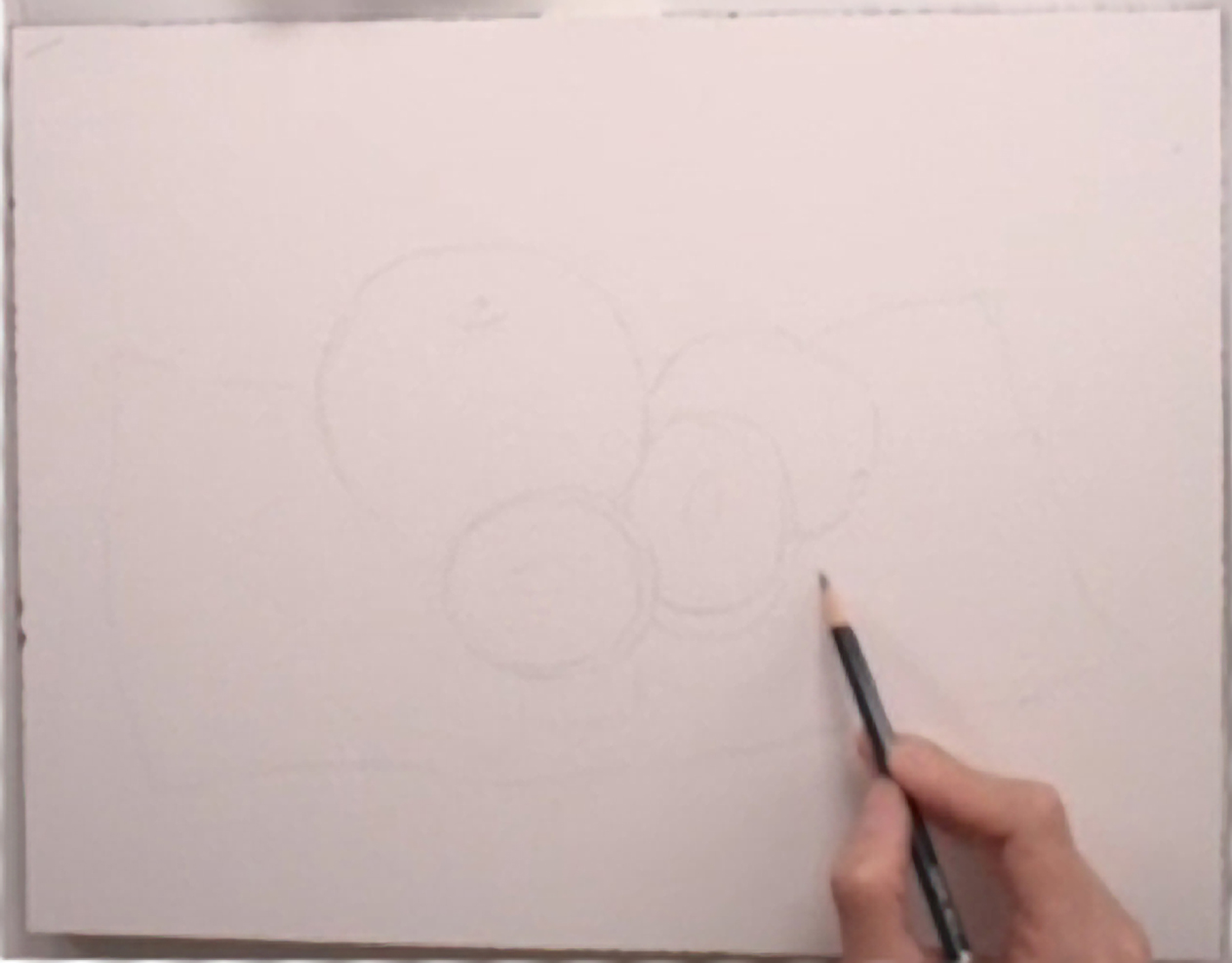 Arrange a still-life of some fruit. In this case, an apple, kiwi, and two halves of a kiwi are used. Make a light outline in pencil to map out the shapes and composition for your painting. Below is a close-up of Isabella's sketch:
Arrange a still-life of some fruit. In this case, an apple, kiwi, and two halves of a kiwi are used. Make a light outline in pencil to map out the shapes and composition for your painting. Below is a close-up of Isabella's sketch: 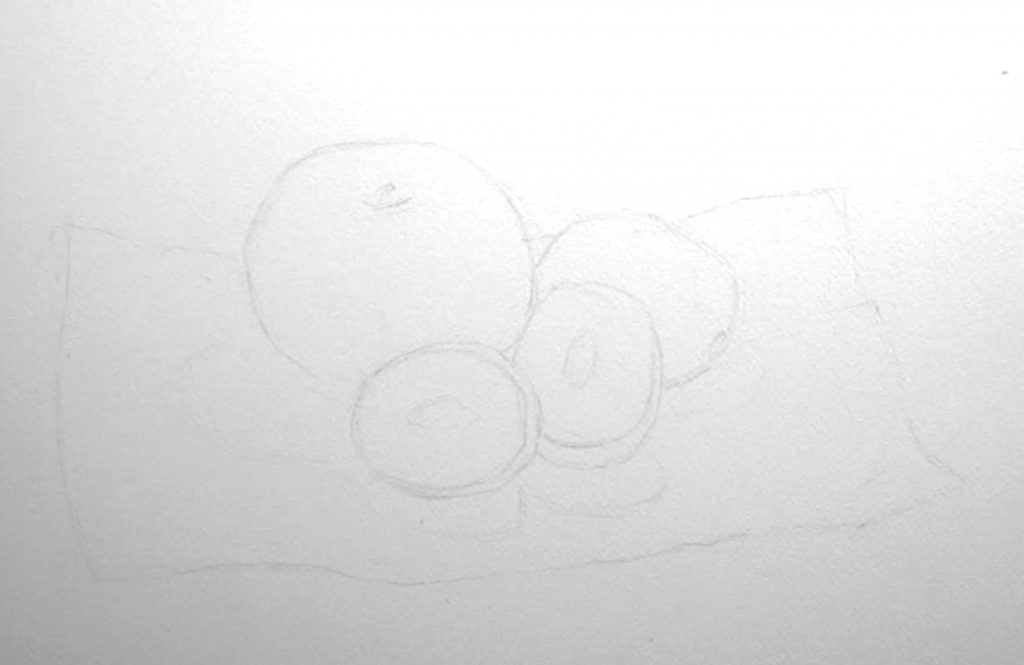
Step 2: Preserving Whites Via Masking Fluid
With a small size 2 round brush dipped in a little soap, apply a small amount of masking fluid to the highlights at the center of the sliced kiwi. This will preserve the white of the paper while you're painting. Allow the masking fluid to dry before you begin painting.
Step 3: The Apple's First Layer
Prop your paper block on an easel or thick book, and prep your paints: Lemon Yellow, Cadmium Orange, Alizarin Crimson, Cadmium Red, and Permanent Sap Green. With your size 16 synthetic brush, wet the shape of the apple with clean water. Switch to your size 7 round brush, and begin by using the "wet-in-wet" technique to paint the top highlights with Lemon Yellow, then drop in Orange using short, curved brushstrokes. Switch to the size 16 brush again, and add strokes of Alizarin Crimson and Cadmium Red, working your way down while following the curve of the apple. As the paper is wet, allow the colors to blend together on paper for a softer look.
Step 4: Fleshing Out An Apple
With the size 7 brush, add a small amount of Sap Green. Once the area has dried slightly, add short strokes of Cadmium Red and a mix of Cadmium Red and Orange to create the stripes of the apple. Switch to the smaller size 6 brush as necessary. Next, mix Cadmium Red and Sap Green to create a muted color for the apple stem and some shadows. With the angular brush, scrub and lift out some of the color on the top of the apple to capture the highlights.
Step 5: The Inside Of A Kiwi
Now to move on to the first layer of the kiwi halves. Using your size 7 brush, and being careful not to touch the edge of the still damp apple, wet the first kiwi half. Mix Sap Green with Lemon Yellow to create a lime green, then drop this color onto the wet paper while avoiding the white center. Switch to the size 6 brush, then dab the edges of the kiwi with a more saturated Sap Green, allowing gravity to help blend the greens together. Repeat the same process with second kiwi half, but with slightly lighter values of the Sap Green.
Step 6: A Starburst Pattern
Once the first kiwi half is partially dry, use the size 6 brush with Sap Green to paint the starburst pattern of the kiwi with short strokes around the center. Turn your paper as you go to make this pattern easier to paint. With the muted color mix of Sap Green and Cadmium Red, paint the details around the center of the kiwi. Repeat this for the second kiwi half. Remember to use the fruit for reference as you are painting, but feel free to use artistic licence. It does not need to be exact. When you're done, leave your painting to dry, or use a hair dryer to help speed up the process.
Step 7: Painting The Fuzzy Kiwi Skin
Prep your palette with Yellow Ochre, Burnt Umber, Violet, and Hooker's Green. With the size 16 round brush, add the Yellow Ochre to the entire dry shape of the whole kiwi for a base coat, and paint the skin of the other kiwi halves with the same color. With the size 7 brush, dab in some pure Hooker's Green to create the texture of the kiwi skin. Add some of the Perylene Violet and Burnt Umber to enhance the shadows of the kiwi. Use the angular brush to scrub and lift out a little bit of color to create a line to separate the right kiwi half with the whole kiwi fruit in the background. Leave this complete first layer of the fruits to dry.
Step 8: Second Layer For Details
Now we move on to the second layer of the still-life to enhance shadows and details. With the size 2 round brush, deepen the color of the apple stem with the Perylene Violet. With Viridian, enhance the color of the apple pit surrounding the stem. Using the "dry-on-dry" technique (i.e. the "dry brush" technique) and the colors Cadmium Red, Alizarin Crimson, Burnt Umber, and Perylene Violet separately, paint the front and side of the apple with a flicking motion to capture the curve and interesting textures of the fruit.
Step 9: A Quick Cast Shadow
With the size 2 brush, mix the Viridian, Hooker's Green, and Burnt Umber to enhance the texture of the inside of the kiwi halves. Prep your palette with Cobalt Blue and a bit of Ivory Black mixed together, as well as a Perylene Violet and Cadmium Red mix. With the size 7 brush, loosely paint the fruits' cast shadows with both mixtures. Dilute the color with more water as you paint away from the fruit, and twist and turn your brush while you paint to create interesting textures.
Step 10: Painting White Tissue Paper
To create the texture of the surface that the fruit is resting on - in this case, tissue paper - add more blue to the Cobalt Blue and Black mix and begin painting the edges, folds, and cast shadows of the tissue paper. NOTE: You want to mix this color with plenty of water to make it a very light tone.
Step 11: A Fruitful Finish
Now it's time for the final details! With the size 7 brush, mix Burnt Umber with Viridian to create the darker areas of the cast shadows closest to the fruit. Switch to the size 2 synthetic brush and mix Burnt Sienna with Umber to paint the pit of the whole kiwi fruit and the fuzzy texture of the kiwi skin using a stippling brushstroke. Finally, after your painting is completely dry, use the rubber cement pickup to remove the now dry masking fluid that you applied at the beginning. If you don't have one of these, you can use your finger instead. Clean up these highlights and blend them with the surrounding green. For the last details, mix Burnt Umber and Black together to paint the seeds at the center of the kiwi halves. Once the painting is dry again, you're done!
